True Crime Analysis, Breakthroughs, Insights & Discussions Hosted by Bestselling Author Nick van der Leek
Author: crimerocket_pmfrt4 (Page 4 of 74)
The favorite theory of the legions following the Chris Watts case [and the YouTuber Armchair Detective] firmly believe 1) Chris Watts killed his children one in front of the other after a failed first attempt 2) had an accessory help him commit triple murder and 3) his accessory knew his wife was pregnant all along and didn’t really care.
It’s the favorite theory for a simple reason – it’s shocking. Because it’s shocking, it must be true, right?
Wrong. The Vang Gogh myth is an excellent reality in check in this regard. The favorite theory of the legions of art fans following the life and times of one of the world’s most popular [and expensive] artists [and the Van Gogh Museum] firmly believe 1) Vincent van Gogh cut off his ear 2) was mad and 3) committed suicide.
It’s the favorite theory for a simple reason – it’s shocking, and people like to be shocked. They want to be titillitated. In a world that operates on hyperbole and rewards exaggeration, it’s no surprise that no one really cares about the facts or the evidence. They want the version that suits their own depraved sensibilities best.
But what happens when we challenge the popular mythology? What happens when one goes to some effort to check the facts, verify the information and make sure? Well, history tends to be rewritten, even in a case like Vincent van Gogh where that history is over 100 years old.
Take the trait that Van Gogh is most famous for around the world – the mad artist. The most basic thing everyone believes isn’t even true.

This assessment isn’t just one random publication, or written by a single reporter in some arbitrary journal. It made world headlines at the time. The time being September 2016 when the Van Gogh museum invited around 30 international medical experts, professors and art historians to settle the issue definitively, once and for all. Guess what? They couldn’t. They couldn’t offer a modern diagnosis, and instead offered something more “prosaic” – they sort of deconstructed the original diagnosis, which was this:
…temporal lobe epilepsy precipitated by the use of absinthe in the presence of an early limbic lesion….
And essentially replaced it with this:
…temporal lobe epilepsy precipitated by the use of absinthe in the presence of an early limbic lesion….
In other words, they agreed that all of Van Gogh’s symptoms couldn’t really be explained by a disorder or a disease, but it could be explained by a drinking problem. Lousy huh? Instead of a mad artist he was simply an occasionally drunk artist.
Even so, despite this unshocking [and thus unsatisfying assessment] by the medical luminaries, the Van Gogh museum who’d hosted the symposium went ahead with their exhibition eponymously titled On the Verge of Insanity. Everyone loved it.

What lesson do we learn from this? We see that human nature isn’t a reliable conduit for truth. Human nature is prone to projection and transference. Our truth tends to be self-justifying. So where can one turn for a neutral view of the truth, if not to one another, if not to the media, if not to experts, skilled lie detectors in law enforcement, historians and – oftetimes – even medical professionals?
Turn to True Crime Rocket Science – the most credible and authentic voice in true crime.

In recent weeks Armchair Detective has been doing overtime trying to prove that Nichol Kessinger was at the Watts home. If shadows can have double [or triple, or quadruple] meanings, if alarms could be triggered by anyone, why not semantics too?
At around 19:28 Armchair Detective plays his hand. Are you ready?
https://youtu.be/pBK19gKmJcM?t=1173
It’s established here that when Chris Watts refers to Nickole Atkinson, he calls her “Nicole.” When he refers to his mistress, it’s “Nikki.” This is an incredible insight that changes everything!

Let’s look at this clip in context though, shall we?
The reporter is asking about Shan’ann’s friends calling frantically yesterday. Who else can it be except Nickole Atkinson? AD spells it “Nicole” which is not the right spelling for Nickole Atkinson or Nichol Kessinger, but two years later, why would anyone expect him to get silly details like that right?
And now the reveal – are you ready to have your socks blown off?
At 19:38 Armchair Detective edits in what appears to be a slip.
WATTS: When Nikki’s [snaps fingers] son…uh…tried to move the door around…when they were trying to get in the door, garage door-
The audio cuts abruptly at this point.
That couldn’t be a reference to “Nicole”, it just couldn’t be. Armchair Detective says this was a slip; it wasn’t Nikki’s son…it was NIKKI [snap snap snap]. He said “Nikki” so it’s a slip, right, he can ONLY be referring to Kessinger, right? Has he nailed it? Was it actually Nichol Kessinger who set off the Vivint alert on Sunday night, early Monday morning?
Uuhhhhhh…hold on…why does the discovery refer to exactly what Watts was saying to Coonrod when he stood beside Trinastich’s TV: that Nicolas and “Nicole” [Atkinson] set off the alarm…


So the alarm thing isn’t a slip.
How about the Nikki-thing? Was that a slip?
Shan’ann and her friends [like Cristina Meacham] often referred to their friend Nickole Atkinson as Nikki, including during the Live she did from the rooftop pool in late June 2018 when Nickole won her auto bonus.


There are also references by Chris Watts to Nickole Atkinson as Nikki while talking to Officer Lines:

And Nichol Kessinger referring to Watts referring to Nickole Atkinson as Nikki.


So let’s do a logic check. We saw Nicolas Atkinson on the scene for almost an hour, actively interfering. We saw Nickole’s car. Witnesses saw her. What were they doing there? Trying to get into the house over several hours. They were looking for someone they cared about. The interference was such that Watts called Nickole Atkinson [how did he know to call her, because he saw her on the ring doorbell camera] and told them to quit messing with his door – because that’s what they were doing. And because that’s when they set the alarm off, purposefully and deliberately.
Pick your reality:
This:
Or this?
Or did Nichol Kessinger really levitate to the scene and levitate out of it, for no reason, while she was on a phone call late on a Sunday night when her adulerer’s spouse was due to come. Her and her car unseen. And why would Watts who was super careful for weeks on end not to let Shan’ann know about the affair, allow alarms to go off when he was there? Would he like to alert Shan’ann, the neighborhood and leave digital traces on the security system for what he’s about to do, or would he like to not do that?
ALL NEW on Patreon: TWO FACE EPILOGUE [Book 9 in the TWO FACE series] available as an audiobook. First review of the intro and first chapter:
“I listened to this 3 times. It was that good.”

During the first two months following the Watts Family Murders in 2018, perhaps the best and most consistent mainstream coverage came from HLN’s Ashleigh Banfield. On October 16th, seemingly out of nowhere, Banfield was taken off the air and purged from HLN entirely.
The reason given was “political.”
“The current cable news landscape is dominated by politics. Our live news shows have not benefited from this trend given our story mix. In today’s news environment, every network has to focus on its strengths. To ensure HLN’s growth, we will shift some of our resources from live to longform programming and produce our live shows in as streamlined a manner as possible.” – CNN EVP/HLN executive vice president Ken Jautz, via an internal memo
Even if HLN’s coverage was competing for the same market, this move came as a blow to TCRS, CrimeRocket.com and the enormous audience following the Watts case. HLN and TCRS were actively researching and reporting on the developments in the Watts case, and at one point even discussed collaborating.
Below is a compilation of Ashleigh Banfield’s excellent coverage of the Watts case.
Crime & Justice with Ashleigh Banfield – Podcast
HLN Jettisons Ashleigh Banfield, Michaela Pereira, Carol Costello In Latest Better Idea – Deadline, October 16, 2018
Valentine’s Day 2020 is the 7th anniversary of the shooting of Reeva Stenkamp. Officially, Reeva wasn’t murdered, and Oscar Pistorius isn’t guilty of murdering Reeva, but murdering an unarmed, anonymous, invisible “intruder.”
Seven years after Reeva’s death, investigative photojournalist and true crime author Nick van der Leek revisits some of the most uncomfortable questions that still haunt South Africa’s most famous criminal.
What happened to the Netcare 911 Call?
Did Reeva have Oscar’s phone inside the locked cubicle?
If so, what was on his phone?
Why did his phone disappear from the crime scene…?
Visit the TCRS channel on Patreon for onoing coverage, including discussions with experts, cutting edge reananimation of the crime scene and recreations simulation what may have really played out 7 years ago upstairs in Oscar’s home inside the Silverwoods Estate.
Subscribe here.
Debunk: Armchair Detective still trying to link Nichol Kessinger directly as an accessory to the triple murders of the Watts Family [UPDATE]
In a recent episode, a YouTube creator presents what appears to be a very elaborate and technical spreadsheet of timeline data. It appears, at face value, to be accurate.
https://youtu.be/uBVluxdPKno
During the episode, the creator and another party discuss evidence which they both agree would stand up in a court of law. The entire 66 minute spiel is predicated on a single moment at 22:52 when the Vivint sensor is activated.

This Vivint signal means, according to the creator and his fellow-commentator, that Nichol Kessinger entered the house. It’s also their hypothesis that Kessinger spent the night at the house, and left about half an hour after Watts did the following morning, making her an accessory to the entire crime as they see it.
It’s an interesting theory except at 23:20, 28 minutes after this alert, Watts and Kessinger were still talking on the phone. So were the couple standing together in his home talking to one another on the phone?
This Vivint alert, like the dodgy shadows story, is manufactured to have only a single explanation, and for this creator it’s always the same – it’s how Nichol Kessinger had to have been there, because she had to be an accessory to a triple murder.
While this creator seems very confident in his assessment, repeatedly asserting in this video that “law enforcement know this”, the title of the video shows he knows better than that too. He uses the words “seem to prove” and a question mark as a sort of disclaimer, and he never refers to Nichol Kessinger as Nichol Kessinger, but as NK, knowing that to do so would get him into a world of trouble. The content of the video says something else, however.
This is one of the most unambiguous episodes I’ve ever seen from this creator where he tries to link an innocent person to a crime, while emphasizing how unshakeably true and defensible his “evidence” is.
Of course, there could be numerous innocent explanations for the Vivint alert, one of them being letting the dog out, or letting some air in. Armchair Detective’s stock and trade is trying to figure out how innocent explanations may not be, and his audience, who are addicted to being titillated by this tabloid-style of one sensational claim after another, love it.
One aspect I found useful in the analysis of the timeline, was the router data showing Watts’ activity [as his phone or other device connects to the router] between 01:53 and 03:00 while Vivint shows no activity. While this doesn’t necessarily mean Watts himself was moving and thus the source of these connections, because devices make connections for a host of reasons as various apps automatically update etc., it does correspond to the TCRS theory that Watts never went to bed that night, and Shan’ann was murdered shortly after stepping in the door.
Another useful titbit was Shan’ann’s iWatch connecting to the router when Watts arrived home from the well site, suggesting he removed it prior to burial.
In general though, the confirmation bias in this particular video isn’t just alarming, it’s infuriating. Be careful, wherever you are, that your shadow doesn’t tear itself loose and get you into trouble.
Postscript: In the video below, at 19:50 the creator suggests – without naming names – that “some people might be friends with Nichol Kessinger…” This appears to be a slur to undermine arguments such as this one and others posted on CrimeRocket. A counterargument against a conspiracy isn’t valid, so their argument goes, not because it’s lunacy and illogical, but because of some relationship or agenda with Nichol Kessinger [in other words, it’s a conspiracy within a conspiracy]. Of course it was this site and via posts on Shakedown that first identified Kessinger to the world, before the mainstream media did or even Kessinger herself. Try to figure that one out.
According to REDDIT there’s now a conspiracy around me too. No surprises there.

Don’t believe everything you read on REDDIT, or believe what you hear on YouTube. I have a new book coming out this week on Chris Watts, and books take a lot of time to write, research and edit.
I’m constantly loading my own content onto Patreon and to some extent onto YouTube, so I really don’t have time or the inclination – or the pettiness – to set up or “be behind” so-called hate channels. That some are convinced I do says more, I think, about you and type of person you are.
The protocols of this site applies in this regard: argue the case, not with each other. When people get banned on my platforms it’s invariably because they can’t understand, and won’t abide by this simple premise .
argue the case, not with each other
If you argue, try to do it using the ordinary lexicon we have, without expletives, slurs, exclamation marks, all caps and all the rest. Try not to be about drama and triggering and reaction; try to think cooly and calmly for a change. Many can’t, won’t or do not want to do that, and I don’t want those sorts of people associated with TCRS.
Everyone who knows true crime knows how hard it is to keep the discussions clean and sensible. When we do though, we learn knew things, and we can actually start to see through all the noise and find out something new. I set a high standard, and one I acknowledge puts most people off. CrimeRocket and TCRS isn’t meant for most people, it’s meant for a more educated, more disciplined and more discerning audience. People who read. People who think. People who’re able to spell and modulate their own behavior. People who are honest and care about the material.
If we’re here to talk about true cime, let’s talk about true crime, not about ourselves or someone else. Once we understand the case, sure, then we can reflect on how it impacts society or certain individuals, but typically that’s a very private and personal matter, and it’s different for everyone. Almost two years after the incident, we are – sadly – still very, very far from understanding this case, or ourselves, much better than before the Chris Watts case.
And so, as soon as true crime devolves into pundits bickering with each other, or about one another, it’s no longer true crime. It’s me-me-me, and it’s little more than a cynical popularity circus. When that happens the leading edge of what we come, and still can learn about these true crime cases floats out the window. It’s for this reason TCRS only reluctantly wades into conspiracies, not to attack those behind it, but to counter, debunk and fight for the authentic narrative. That has been and always will be the position of TCRS.
For the record, I agree 100% with Christina Randall’s position on Nichol Kessinger as communicated at 10:10 and here, at 10:57 in this video review of the latest TV coverage:
More:
Sinister Signals from the Router in the Watts Family Murders – and what it might mean
Understanding the Vivint Technology System installed at 2825 Saratoga Trail
52.25 into the Lifetime movie we see a dramatization of Kessinger finding out Shan’ann was pregnant. After cutting to a close-up of Kessinger’s eyes peering at a computer screen we hear a voiceover from a reporter saying:
“Shan’ann is fifteen weeks pregnant. I know this may be a tough question, but did you guys get into an argument before she left or anything…?”
Watts answers:
“It wasn’t like an argument or anything. It was like an emotioonal conversation…”
The actual moment a similar question was asked was at the very end of the Sermon on the Porch, basically 15 minutes into it.
Listen a clip of that moment here.
In the dramatization Kessinger is shocked. Scene cuts to her calling Watts that night and him saying the child isn’t his.
A few obvious problems with this scene:
1. Kessinger was likely at work when the news footage first aired, whereas the zoomed-in scene suggests she’s at home. Although the TCRS position was initially that Kessinger had to have known about the pregnancy all along, this position changed in late 2018 to one where she found out about the pregnancy on Monday afternoon or Monday night [when Watts told her the baby was not his], or very early on Tuesday morning after additional internet searches. 
2. More likely Kessinger found out online about the pregnancy, rather than from television footage or from Watts. It’s unlikely the clip where a baby is mentioned actually even made it into the news reporting. It’s an open question whether Kessinger ultimately found out the truth about the pregnancy via Facebook or on the news. One good reason to believe she didn’t find out via Facebook is because Kessinger herself wasn’t on Facebook. The first report of Shan’ann missing – and that she was pregnant – was this one on Facebook.

The first online news report was from KDVR[Fox Denver] published late Tuesday morning:

This timeline corresponds to Kessinger’s marathon internet search starting at Tuesday noon for news.
3. In a recent documentary, Agent Tammy Lee said law enforcement watched the Sermon on the Porch at approximately 17:00 on Tuesday afternoon. It’s unlikely Kessinger – who was at the center of things – would have found out was going on when everyone else did, including law enforcement.
4. Kessinger was already actively Googling for news about Shan’ann starting at midnight on Monday and – as mentioned – around noon on Tuesday. It’s likely during these searches she would have discovered news of the “pregnant mother” missing as early as Monday afternoon or as late as Tuesday at around noon.

Clearly by 17:00 on Tuesday the penny began to drop for Kessinger that Shan’ann and the kids were in real trouble, and if they were, she was because she suspected – rightly – that Watts was involved, and why he was involved.


The moment dramatized of the adulterers discussing the pregnancy likely didn’t happen on Ceecee’s bed, nor the bed in the basement, but the bed in the main bedroom. We know that by Tuesday Watts had put new sheets and pillow covers on the bed in the main bedroom, and also laid on that bed.
The conversation with Kessinger on the matress probably took place late on Monday night, and lasted 51 minutes, but there was also a second call at 02:07 early on Tuesday morning.
Six of the Darker Aspects the Lifetime Movie Got Right – Patreon
It’s easy to know in hindsight, but infidelity lies at the heart of the Chris Watts case. While researching this case I wanted to see the instances, in particular the very first instances, where law enforcement asked Watts about infidelity. There are a few, but the first, captured on Coonrod’s body camera where he asks Watts whether his separation with Shan’ann is “civil” camera is perhaps the most significant.
I was pleased to see Lifetime dramatized it, even if the execution was poor.
1. “Did you guys have any kinda of issues…marital issues or…?”
It is interesting how the dramatization gets subtle aspects wrong. Nickole Atkinson isn’t around when Coonrod mentions this in reality, and I’m not sure if it’s fair to say she was unaware that the couple had marital issues. What is true is Watts was claiming the separation was more formalized, more established than it really was. Also, in the Lifetime movie the actor says quite assertively, “We’re separated.” Chris Watts puts a milder touch to it, stuttering, “We’re going through a separation.”
2. Sex with Nichol Kessinger
Although everyone is aware of it, and everyone seems to think they know this case inside out, it’s clear the five week period Watts and Kessinger together felt like a honeymoon for both of them. It’s because of the spark and electricity of these encounters that Watts was largely desperate to keep the new relationship viable. And since Watts was somewhat inexperienced with the opposite sex, one can imagine the spell being cast over him being much stronger as a result when he found himself in a position of a coworker pursuing him.
3. Shan’ann on social media but seen from the perspective of a third party.
4. Nut Gate.
Although not explictly referred to there is a scene where Shan’ann mentions not wanting their children to sleep at the Watts home.

5. Deeter Gate
This scene is slightly more explicit than Nut Gate.
One can see how both Nut Gate and Deeter Gate raised the pressure on Watts to find a solution to his marital dilemma.
6. Watts is depicted as not happily married.
7. Not dramatizing the driveway.

[Points 8 – 13 will be provided on Patreon].
First off, I didn’t share the Westword reporter’s view that the filmmakers blamed Thrive. To be honest, although this was depicted a few times, my impression is that the reporter was trying to gain traction for a story on a sensational angle. The Strive aspect is very secondary, very much in the background of this story. If you’re new to the Watts case, then maybe noticing Shan’ann’s promotional activity, which is dramatized occasionally, is going to seem like a big thing. It isn’t. In fact, it’s hard to say what the big thing is this film is trying to point out.
The main message of the film seems to be to say that everything we know about Watts, and what he did, is kinda fuzzy. That’s not a contribution to the lore surrounding to this case, it’s a weak concession, and a cop-out. It’s almost like the filmmakers said: look, we don’t know what happened here, nobody does, so let’s not try. Let’s just stick with his version, depict that and make the story about the version no one believes. Let them try to figure out what really happened – that’s not our job.
As a narrator, I found the narrative of the Lifetime movie messy, disorienting and chaotic. It’s not chronological, it’s not clear, and overall, as mentioned above, the film pays homage to Chris Watts first version, with only a passing interest in forensic accuracy. No surprises there. From a true crime perspective, Lifetime movies are the last place to want to find a documentary-style criminal investigation.
The value in dramatizations in Lifetime fare lies in:
1) Depictions of family dynamics, characters and interrelationships
2) Reenactments of the crime scene
The movie opens with out-of-focus footage of the child actors playing Bella and Celeste running through a garden, and laughing, while news coverage of the disappearance provides a kind of voiceover narration. Emphasized in this montage:
“They seemed like a normal family.”
Then there’s a close-up of the side of Watts’ eye, and a clip of his sandaled foot under a table jigging up and down. Watts is restless, agitated. Something is going on in his head.
Then the voiceover shifts to Shan’ann’s voice, doing a Thrive promo:
“You have to set an example for your kids…so take that leap of faith.”
You hear a child’s voice echoeing her words in the background, and Shan’ann laughs with delight. This feels a little like that 30-minute Thrive spiel on that Saturday morning in May with the whole family present.
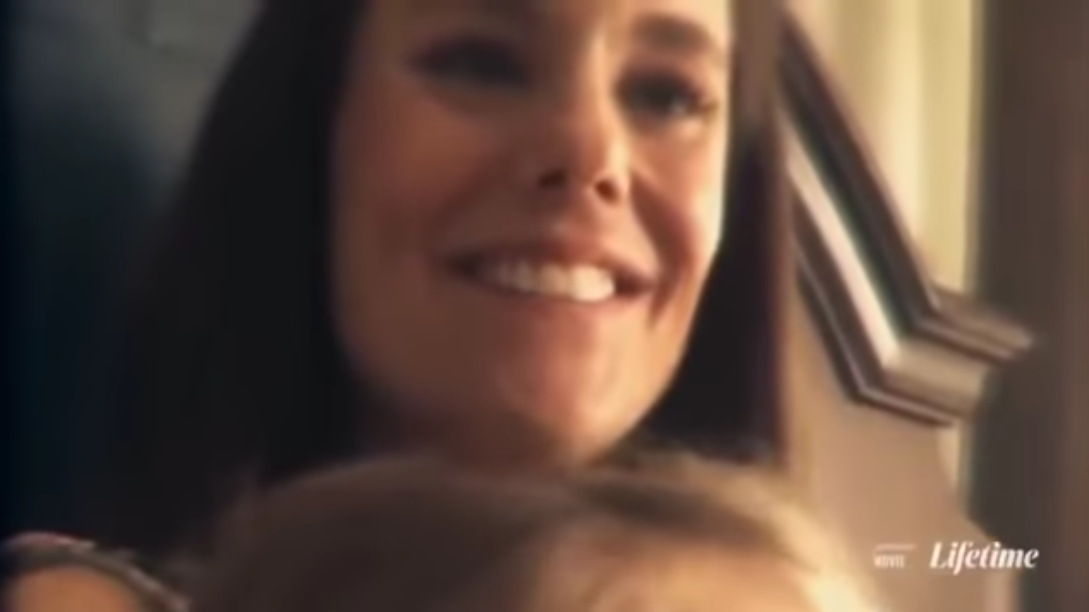
This is all meant to show Chris Watts remembering them.And he’s remembering them, as I said, from the inside of the interrogation cubicle.
I found the opening montage fuzzy and disorientating. A poor start, in other words.
In fact, throughout the whole film there is very little footage of the children. For the most part they’re excluded or left out or there’s a blurry allusion to them. Besides Bella singing “My daddy is a hero…” in the car with Celeste beside her, and a brief clip of the children crying softly in the truck on the way to the well site, there’s virtually no dialogue from the children. And [spoiler warning] there are no dramatized scenes of the children on the driveway, getting into the truck, or of anything that happened at CERVI 319 on the morning of August 13th.
From a legal perspective, the narrative device seems quite clever, and probably impressed the producers at the pitch meeting for this film. “We’ll tell this story through Watts himself, giving the backstory to his own story during his polygraph test.”
In the discovery, there is a very extensive backstory from Watts himself in the pretesting phase, starting on page 581 and concluding 15 pages later on page 596.
“Then at the very end, we’ll provide the twist of the Second Confession to show you really can’t know someone, or whether what they say is true.” And so that’s how it’s done. Most of the film is from Watts’ perspective, and most of that perspective comes from 15 pages of the outdated discovery relating to the First Confession.
If you’ve found the first section of this analysis messy, disjointed and disorienting, that’s how the first two-minutes feel. It takes a while for the chronology of the story to settle down, and although it has its moments, the whole film is ultimately a mishmash of scenes and flashbacks with very little in the area of authentic moments. One seldom has an aha-moment where it feels like anyone’s character is addressed, and that’s the main problem. There’s no character-building. No arc. No real story to speak of. It turns out the fuzzy memory of the children in the garden is from Watts’ head as he sits in the interrogation cubicle waiting for Tammy Lee to enter to do the polygraph test.
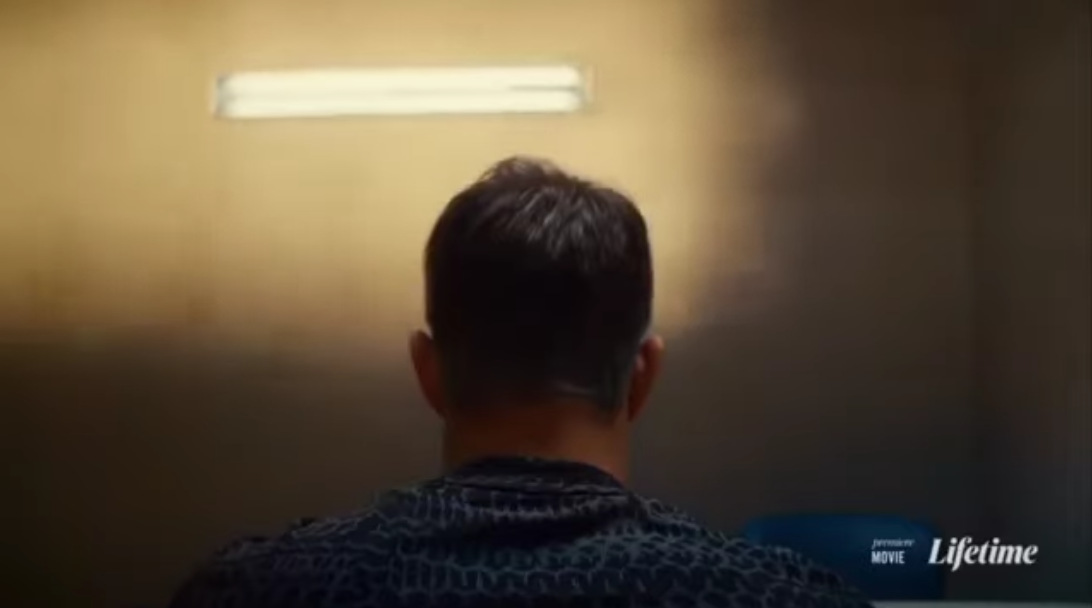
One of the best parts of the film is the movie title. The graphic design does a nice job in showing the two faces of Chris Watts, and how the two faces don’t line up. Skillfully represented.
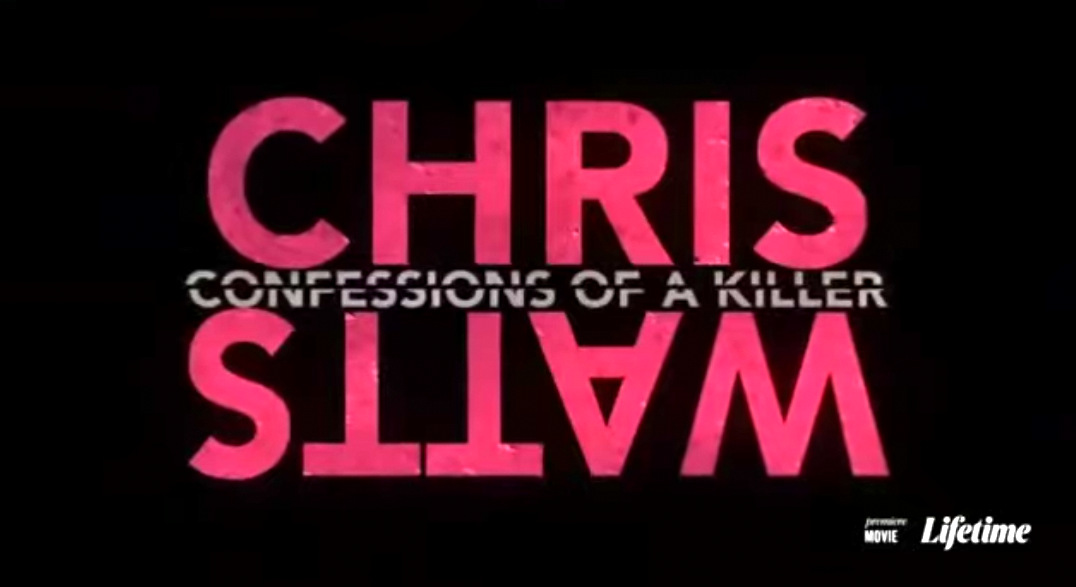
The whole film basically cuts back and forth to Watts “remembering” the events leading up to the murders while he’s being questioned by Tammy Lee. In other words, 90% of the film is based on the First Confession.
The actor playing Agent Coder also plays a very, very secondary role to Tammy Lee [acted by the same woman who played the victim in the pit in The Silence of the Lambs].
After the title image, the scene reverts to Watts doing his infamous Sermon on the Porch. While he’s talking, dogs bark in the background. Not bad. Same setting, same words, same clothing, same basic body language. Even the actor appears less nonchalant than Watts did during his Sermon on the Porch. Even though he’s acting and didn’t commit triple murder, this is an irony in itself
Once done with the interview, we something we haven’t seen before. Watts walks into the door and sits on the staircase. He’s alone. He sits there for some time. We see the light moving through the windows beside the front door, showing the movement of time. Cut back to the interrogation cubicle, and Watts is introduced to Tammy Lee, who let’s him know what he’s in for if she chooses to lie to him during the polygraph.
It’s at this point that the chronology starts to settle down into something slightly resembling a narrative.
Now let’s deal with the mistakes.

#1 Heaviness in the pregnancy announcement is missing.
Deeter is in the room, and at Watts’ feet when Shan’ann announces she’s pregnant. She’s wearing the right shirt, and he’s dressed the right way too. But this was the first sign of the filmmaker’s poor intuitive grasp of the subject material. Not only is the venue in the house wrong for where the spiel was recorded, Chris Watts appears genuinely excited and genuinely happy about the pregnancy, far more so than the real Watts did. The actor does a convincing scene, appearing enthusiastic about his movie-wife’s fictitious pregnancy. What was needed was for the heaviness in the dramatized Sermon of the Porch to be more manifest here, and for the nonchalance and lightness here, to be more evident in the Sermon on the Porch. Where the fake Watts says, “I guess, I guess when you want it it happens, ” there’s no trace of the awkward Chris Watts. Instead, it seems natural and even charming when acted out by this actor.
#2 Watts at the well site.
A lot is crammed into this scene. Watts describes his weight loss, and exhorts his co-worker to contact his wife and start Thriving. He loses his ring and his co-worker, retrieving it, says, “Forgot something?” His co-worker also mentions “Nikki” in the context of safety, and hands Watts a gift card to treat his wife. Watts also mentions his wife being pregnant and hoping for a boy [an aspect supposedly kept secret from everyone at work except his boss]. In this scene Watts appears way too balanced, confident and chatty. Gift cards at Anadarko [which is never named in this film, and the well site and four white tanks are nothing like CERVI 319] are not allocated as actual gifts or favors, but are earned as a result of achieving safety milestones.
#3 Nichol Kessinger gives Watts her card.
Shan’ann meets Nickole, is on her phone most of the time. Leaves for North Carolina in the middle of the day.
We see Watts turning to face his house and the camera zooms in, making the house loom over him and swallow him up. This is arguably the best scene the film.
The way the story is staged is the moment after Shan’ann leaves and Watts is left alone, he meets Nichol Kessinger and things happen instantly.
#4 Chris Watts is home alone watching porn.
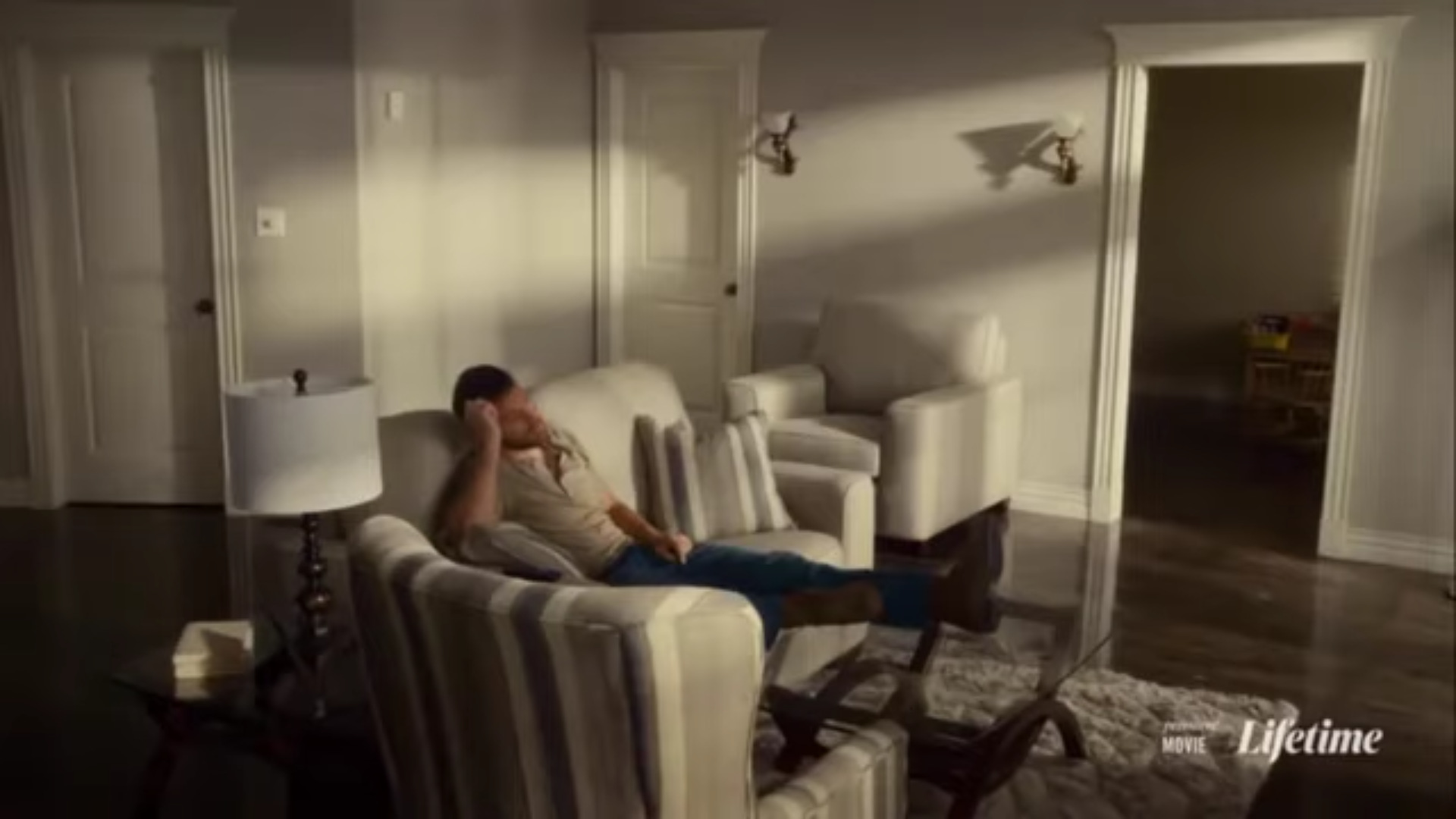
#5 He’s bored, so he calls up Nichol Kessinger.
#6 And they meet up in a wooded area.
#7 Where she finds out he’s a dad, and he’s married – but still wants to see him.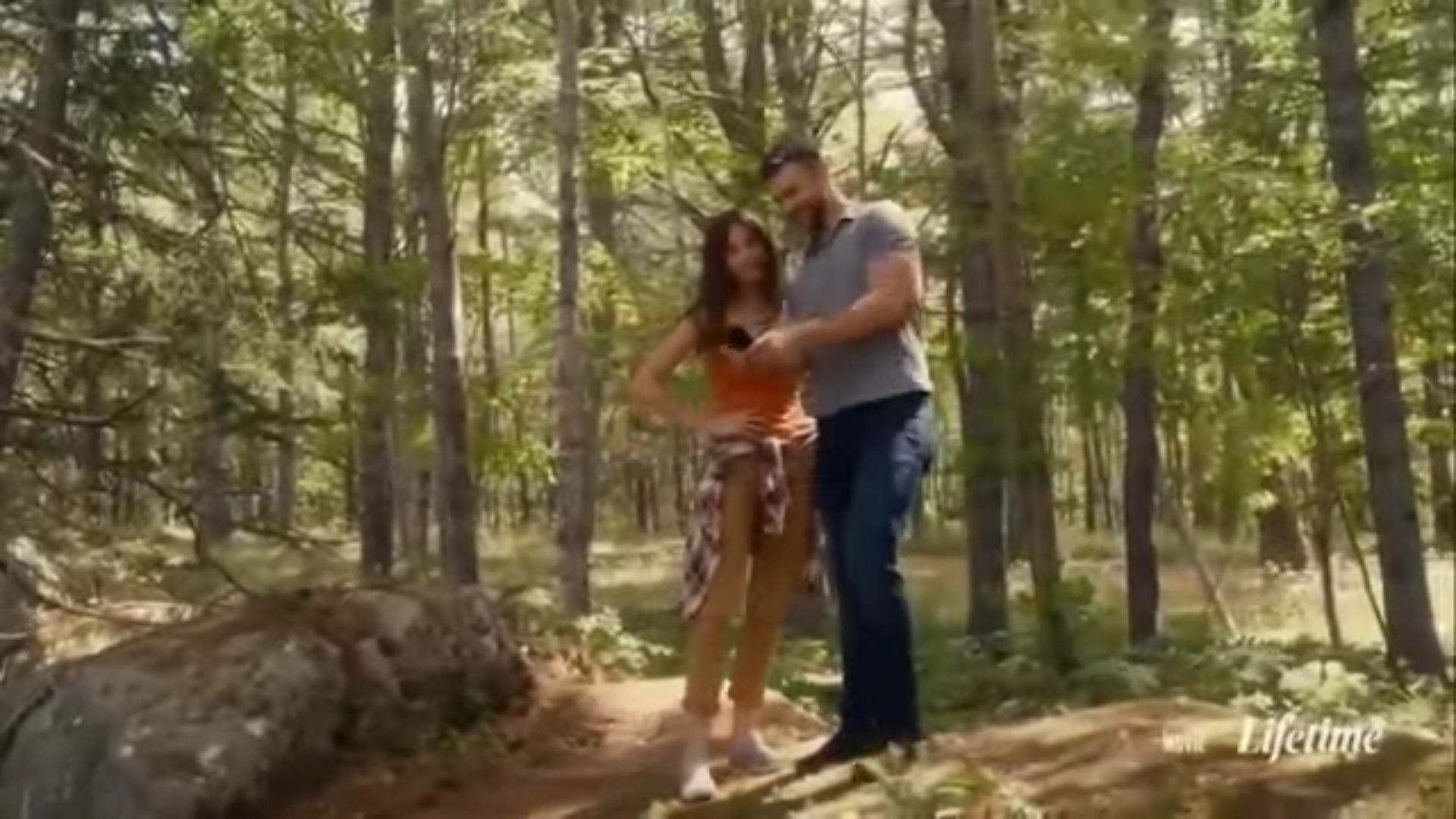
#8 “I’m out with the guys.” Watts hangs up on Shan’ann.
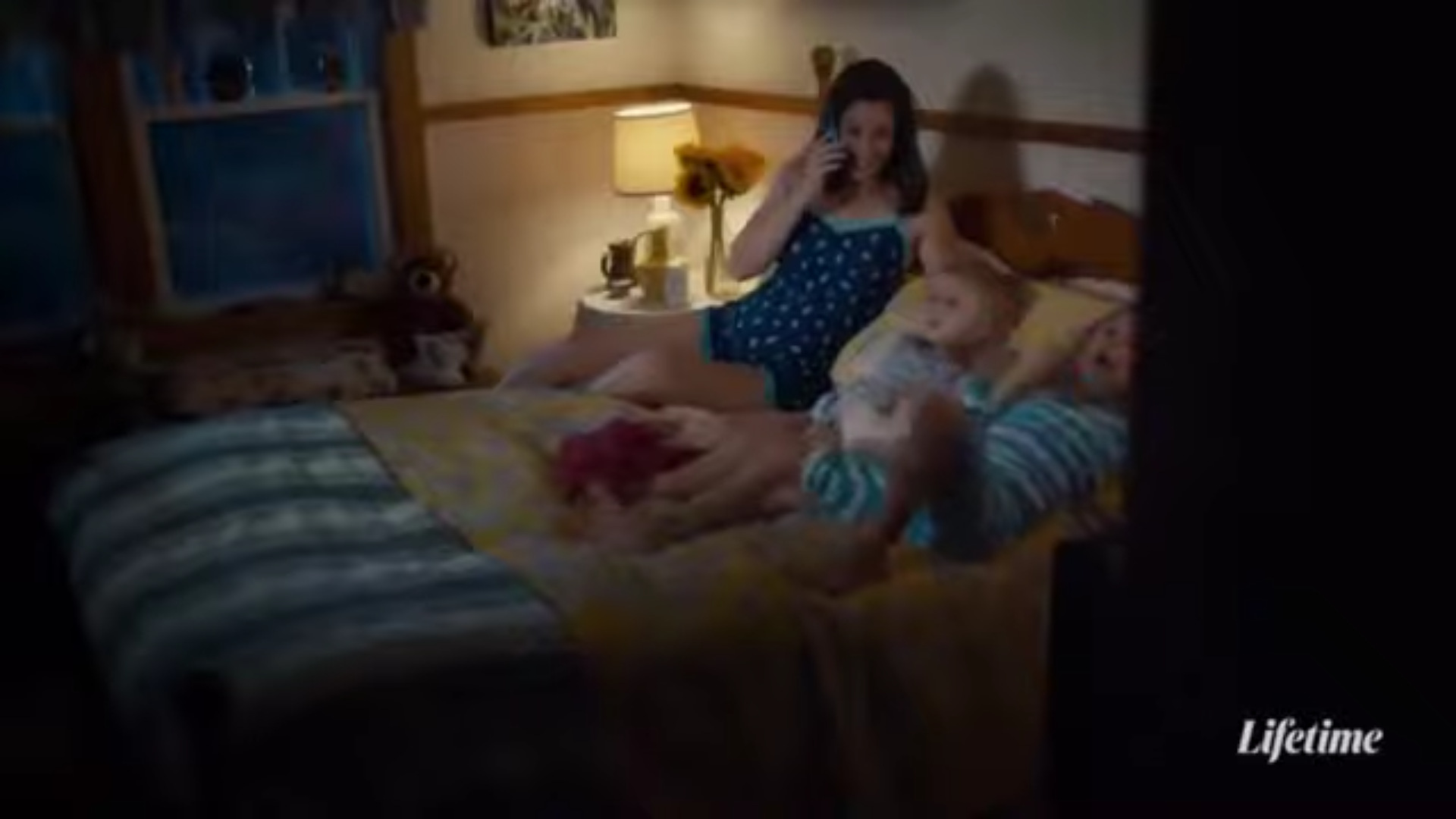
#9″Come here.” The assertive Watts ravishes his mistress in the backroom of a restaurant.
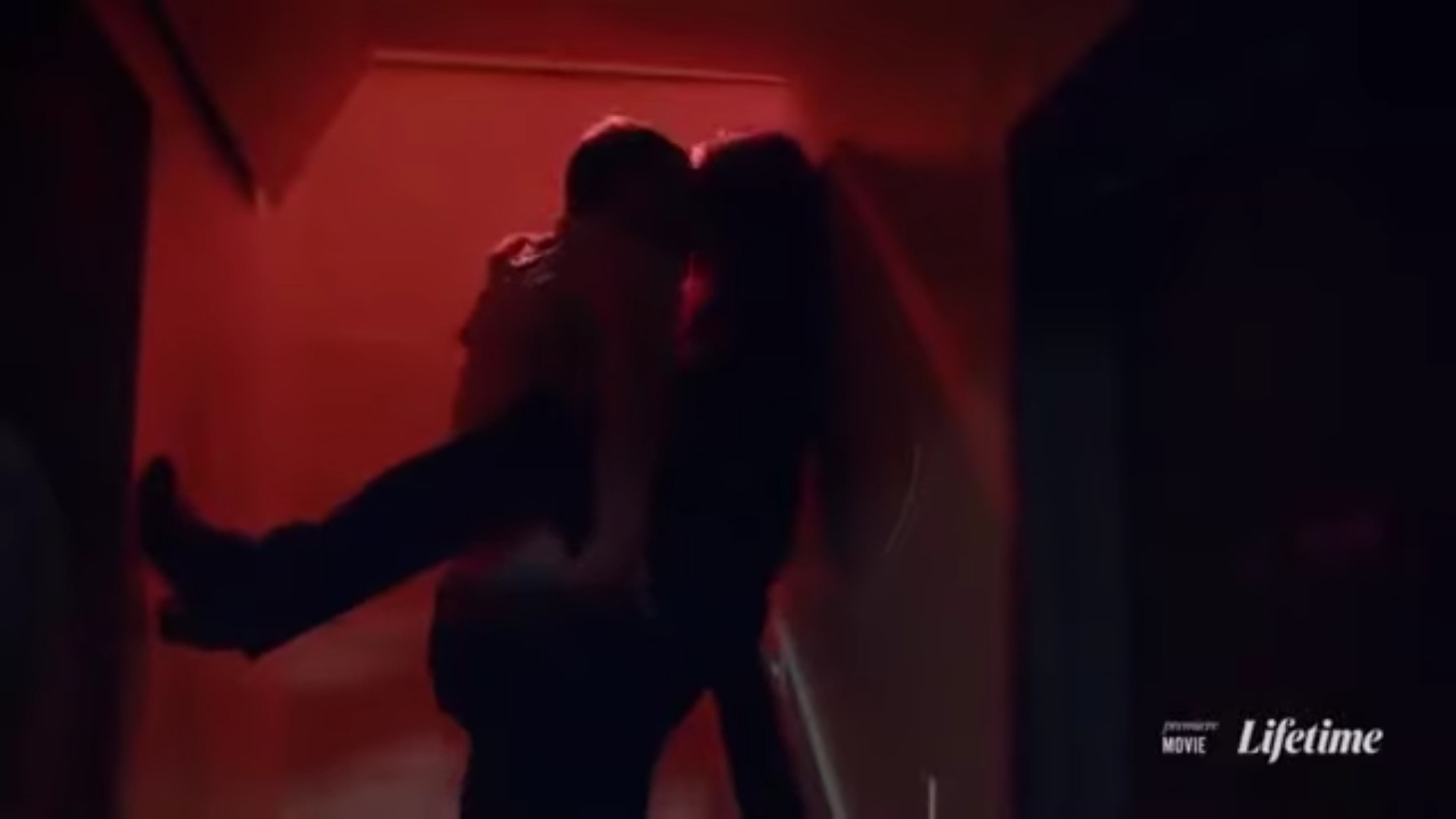
#10 “Are you judging me?” “Yes, I’m judging you!”
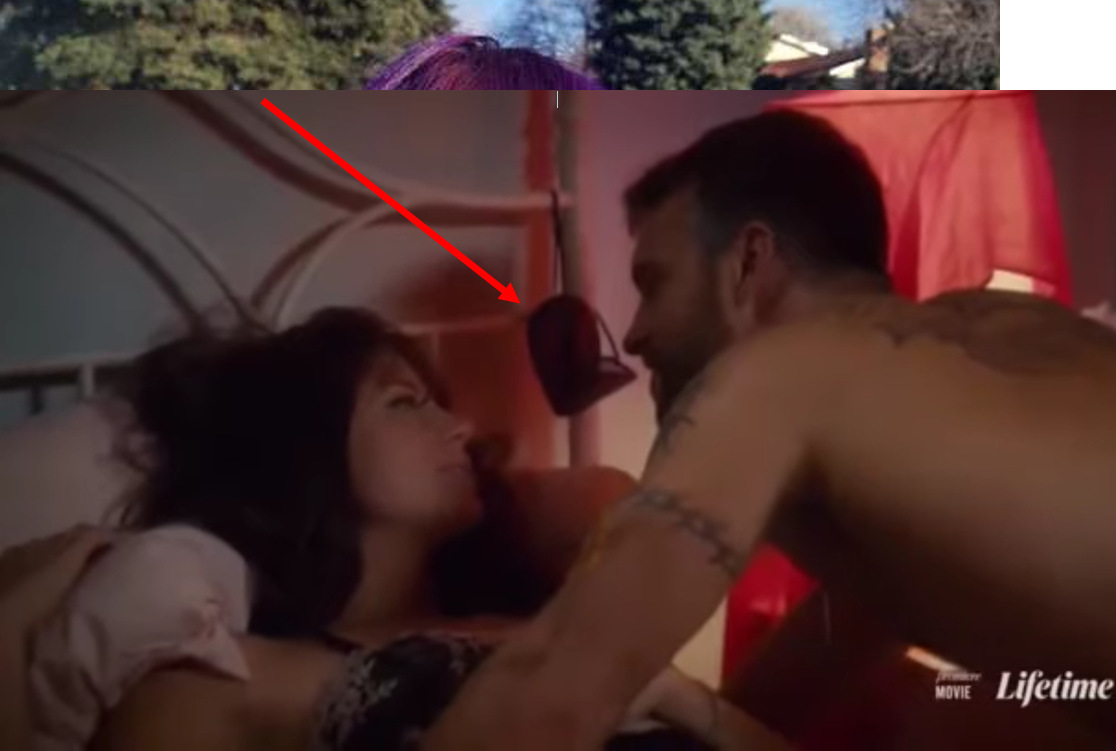
It just doesn’t sound like Watts, does it?
Note the sleep mask dangling from the bed post in the background.
#11 Visit to the Watts Home – minus Cindy, and minus Nut Gate.
#12 A distressed Shan’ann calls Watts to say…she doesn’t want the kids sleeping over at his folks.
She doesn’t say why.
#13 Deeter Gate – minus Deeter.
Nichol visits the Watts home. She doesn’t go unstairs and Deeter is nowhere in sight. She says, “Why would you want to leave all of this,” and then, in tears, asks Watts to take her home.
#14 Nichol Kessinger stalking Chris Watts’ Facebook page.
Not Shan’ann’s?
Does she know Shan’ann’s pregnant?
#15 Watts reconciles with Kessinger by picking her some yellow wildflowers.
#16 They go camping next to a lake, and after Googling when to say I love you, he tells her he loves her.
Watts Googled when to say I love you on July 25th, but only went camping a few days later.
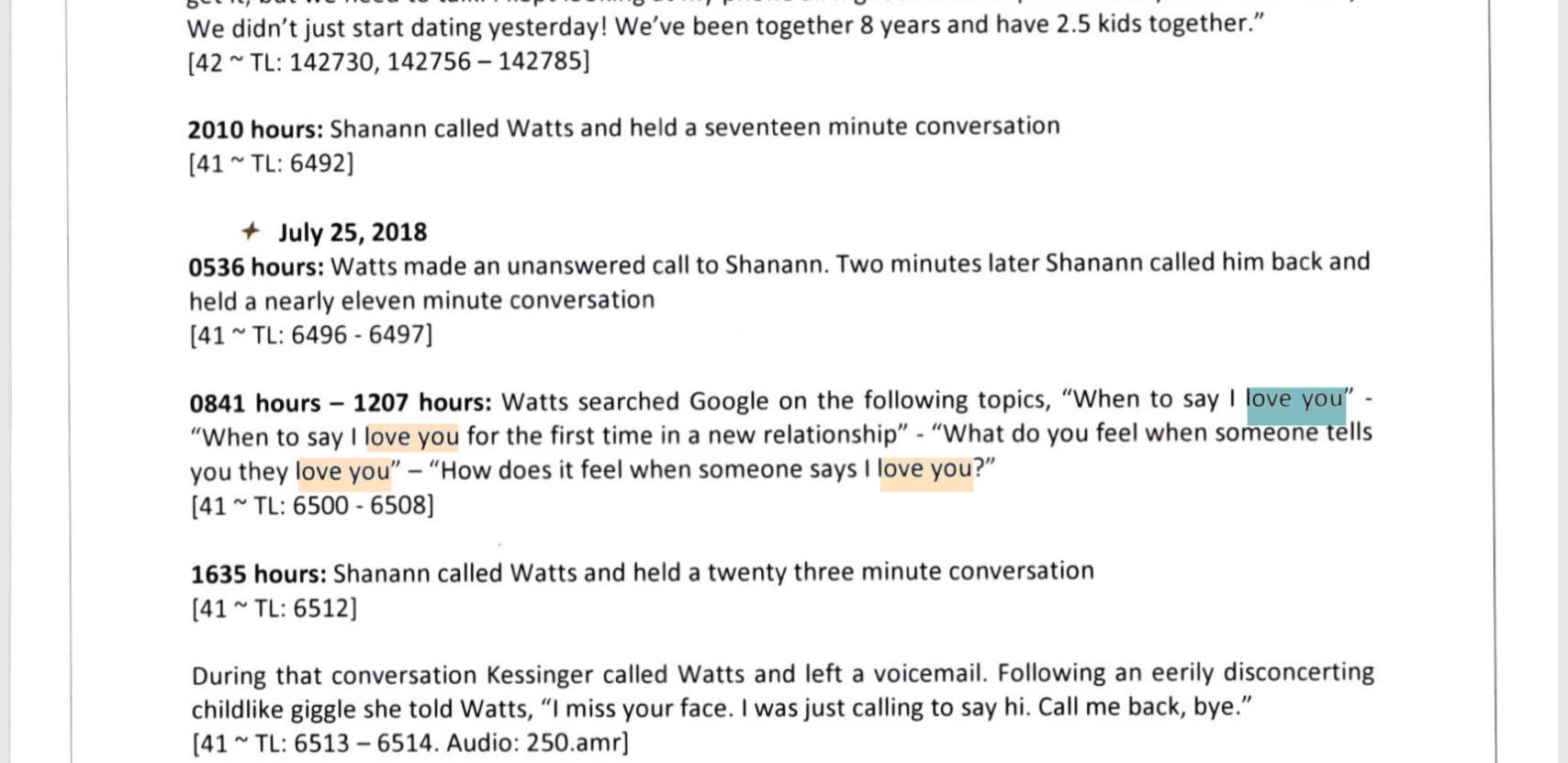
#17 Watts heads to North Carolina – but they don’t meet at the airport…
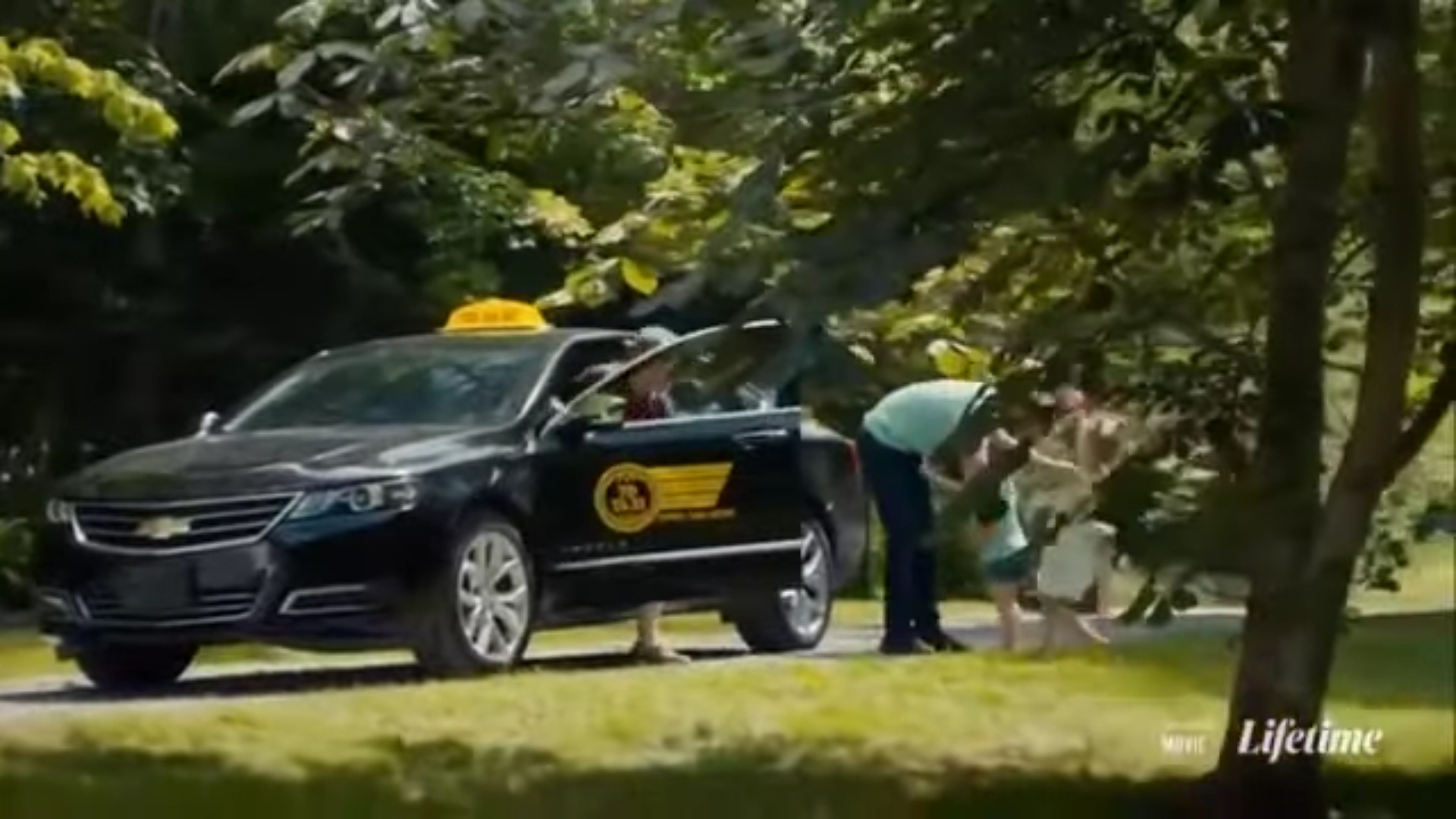
As they did in real life…
And incidentally, when Shan’ann and the kids left for North Carolina, Watts took her to the airport.
Instead of saying goodbye in the road, in front of the house.
Watts also gave Kessinger this card on their last day together in Colorado, before he left for North Carolina.
Their argument about airport parking isn’t depicted either. But Watts is depicted as standoffish.
They got the shirt color right for his arrival in North Carolina.
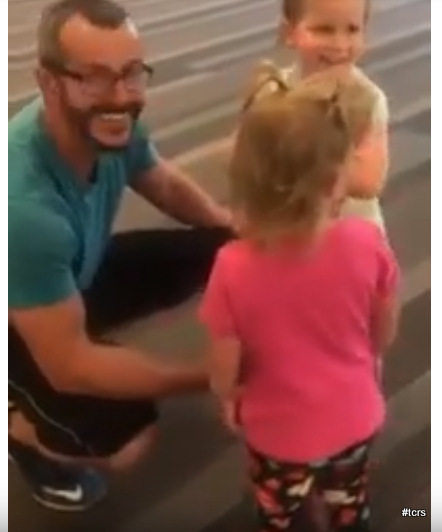
#18 Shan’ann tells Watts she’s “spotting”…on a pier…
When it was actually communicated via text on the afternoon of August 5th, 2018, the day prior to Watts visit with his folks in Spring Lake [without his wife and children, on their last full day in North Carolina].
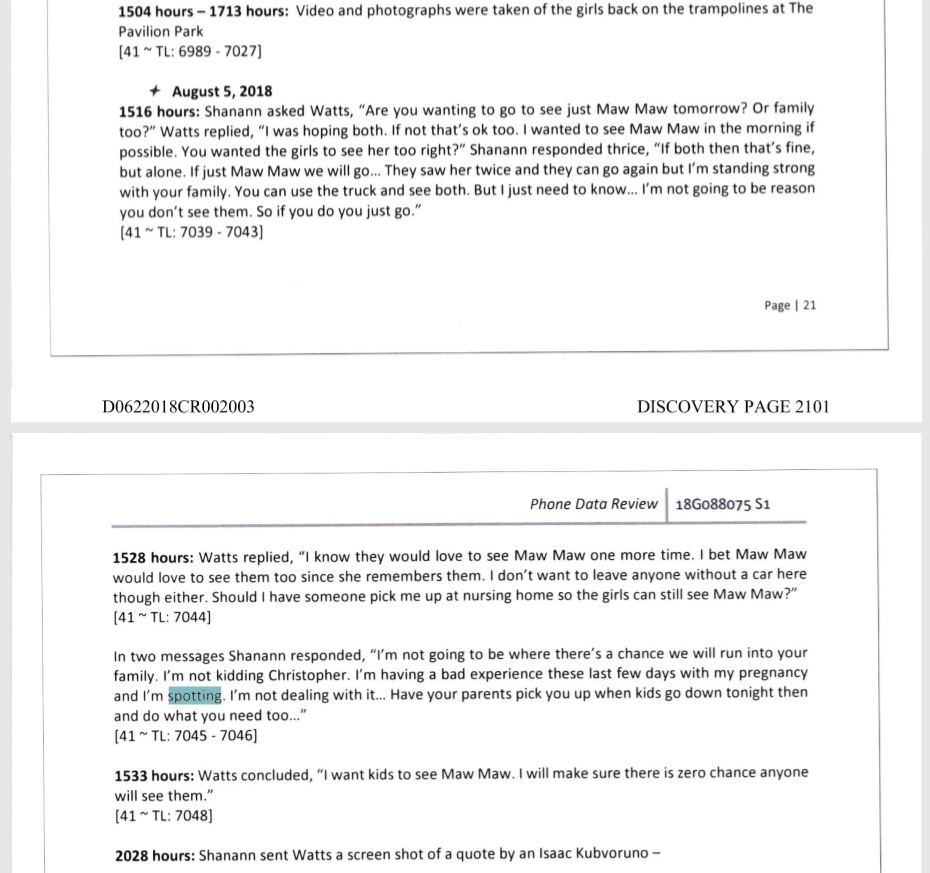
#19 The scene dramatized at Myrtle Beach shows the kids flying a kite…
Shan’ann looks concerned, as if she’s cottoned on to Watts not being fully himself with her.
We don’t see the scene at the bungee trampoline either.
#20 During an argument back in Colorado, Watts decides they should take a trip [to Aspen] to mend their relationship.
And then Shan’ann leaves for Arizona. Although technically true, they did make plans for a couple’s weekend away in place of the gender reveal party, it was Shan’ann pushing for couple’s counselling, and as the dominant force in the relationship, it seems unlikely he would suggest this.
#21 There are no windows in the garage used in the Lifetime movie.
Because that’s how Nickolas was able to see inside, see Shan’ann’s car and car seats and know something was wrong.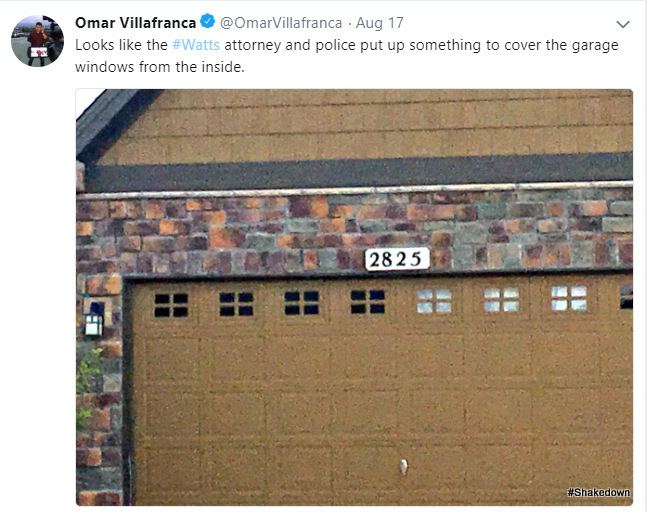
Analysis of the blinds of Chris Watts’ Home
#22 Watts doesn’t close the door of the Lexus after entering the garage.
He leaves it open. It’s an obstruction.
Officer Coonrod’s Bodycam appears to show Watts tucking something under his arm…
Officer Coonrod’s Bodycam appears to show Watts retrieving something…in the garage [UPDATE]
#23 Inside the house Watts walks to the kitchen…and stays there.
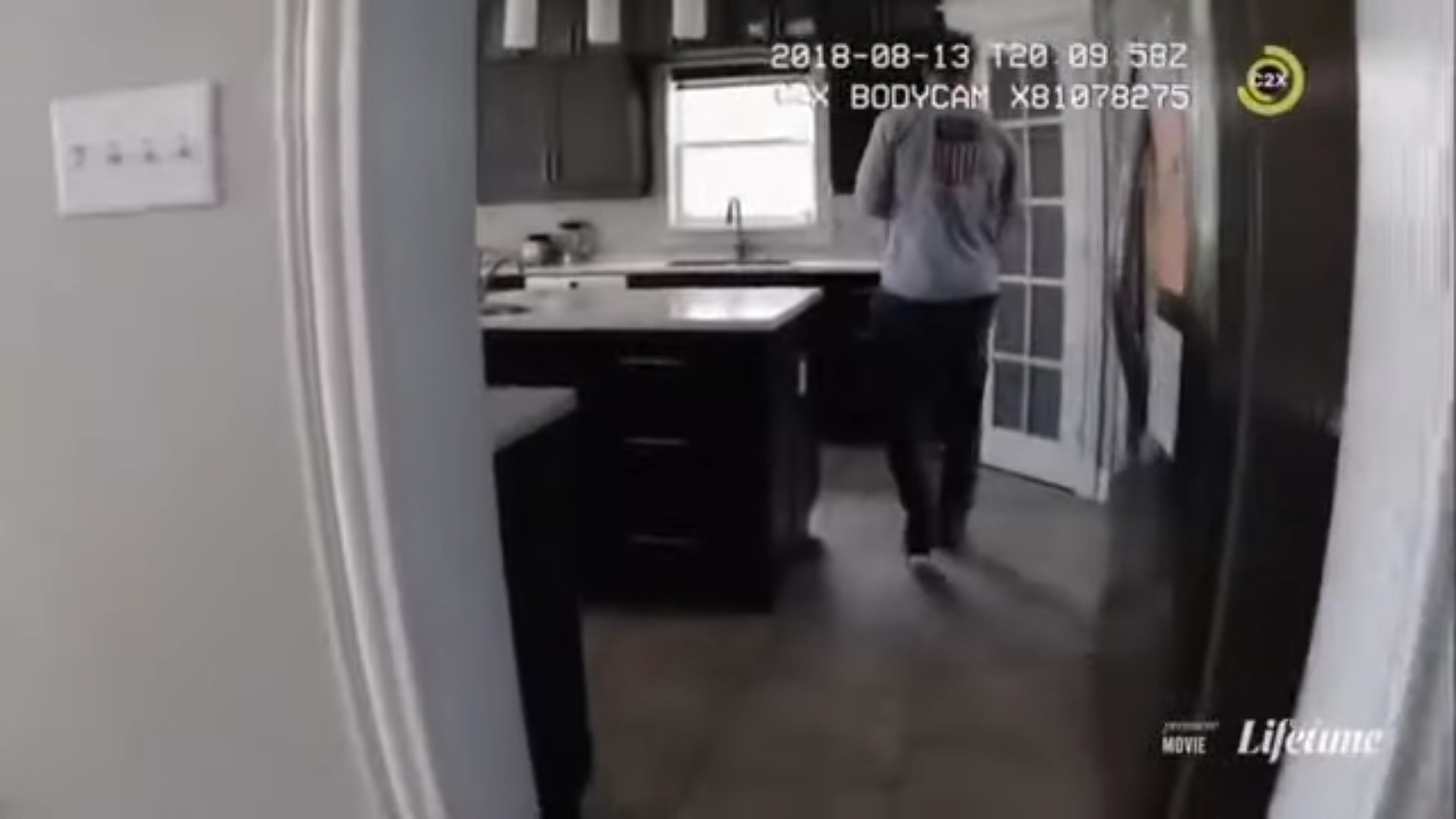
Lifetime shows him glance into the pantry.
In reality, as soon as Coonrod reaches the kitchen, Watts scoots around him and walks quickly to retrieve Deeter from the basement. Why is Deeter in the basement? No one thinks to ask, but this ought to have put suspicion on Watts early on, and in retrospect, also shows premeditation and post meditation.
Excellent Footage of the Moment Officer Coonrod Arrives on the Scene at 2825 Saratoga Trail
#24 Chris Watts depicted as awkward as he views Trinastich surveillance video.
This is where the Lifetime movie Chris Watts jarrs. It’s not that his depiction isn’t true to life, it is, what’s wrong is this moment doesn’t fit with the cool, sauve, charming Watts the actor has portrayed until this moment. He’s left something out of the character and now, here, it’s too late to fill in those gaps, or figure out who Watts really is.
I guess he’s just an enigma right, and no one will ever know?
Or a narcissist?
Well, no. We know exactly what sort of personality-type he is.
But the actor just doesn’t get Watts as an introvert.
It’s not really clear what aspect he was trying to portray – perhaps narcissism. How do you portray narcissism that’s different to everyone else?
#25 Next we’re back to the Interrogation Cubicle, but Watts is sitting in the wrong place.
#26 And the scene of Watts confessing to his father…well…believe it or not it’s not actually depicted.
But at least they got Ronnie’s shirt color right, and Watts is also wearing the right clothes too.
Incredibly, there’s no depicting here of arguably the biggest WTF moment of the entire case – firstly where Watts confesses to his father, and secondly where Ronnie’s dad, shortly after being informed that his son murdered Shan’ann and both his grandchildren are dead, offers the cops some flaky corroboration [the doll wrapped in plastic] of Shan’ann’s supposed involvement using his phone.
#27 Who said: “I think we’re very, very close, but we’re not quite there yet”?
It wasn’t Lee, as depicted in the movie.
#28 – 31
The dramatization had a host of errors and inconsistencies too.
TCRS Analysis of the Final Scene in Confessions of a Killer – Patreon
The above link provides an analysis of the dramatization in the Lifetime movie, and why it doesn’t make any sense.





© 2025 TRUE CRIME ROCKET SCIENCE
Theme by Anders Noren — Up ↑

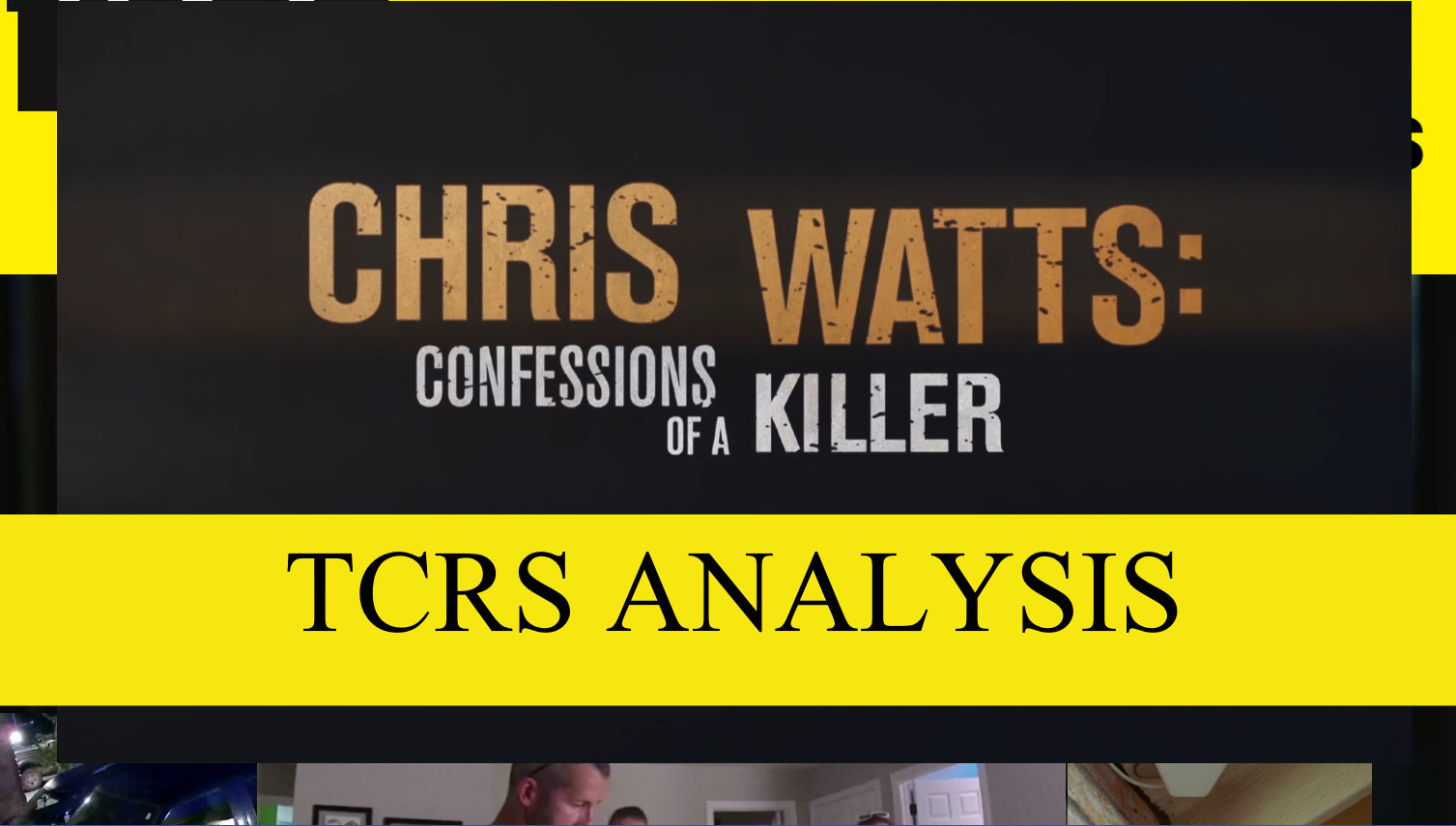
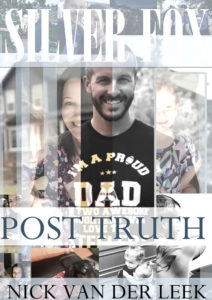
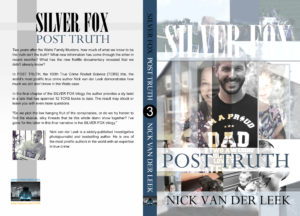





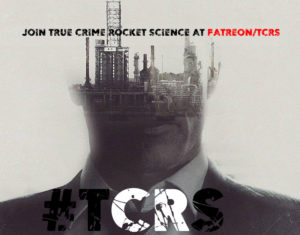



Recent Comments